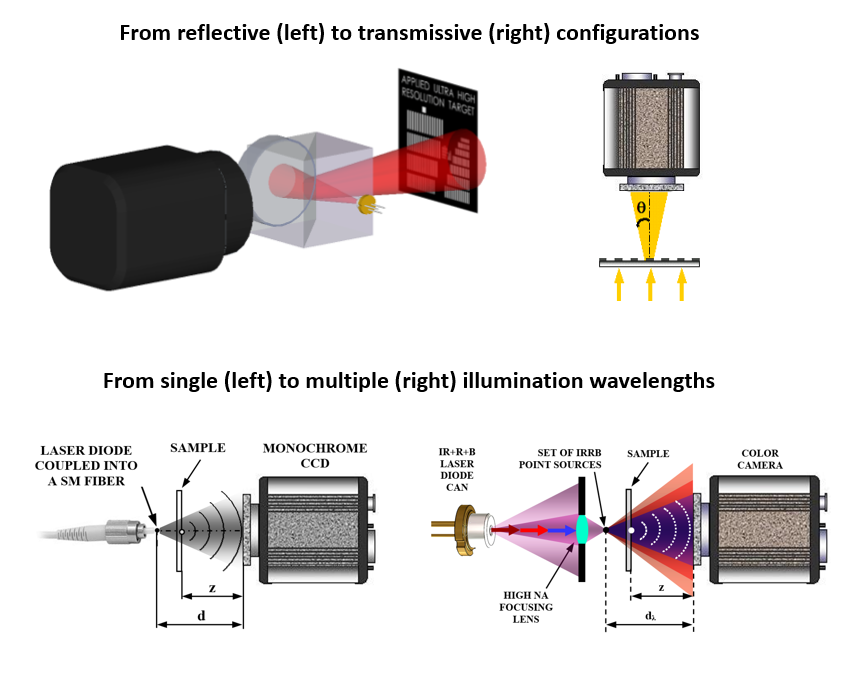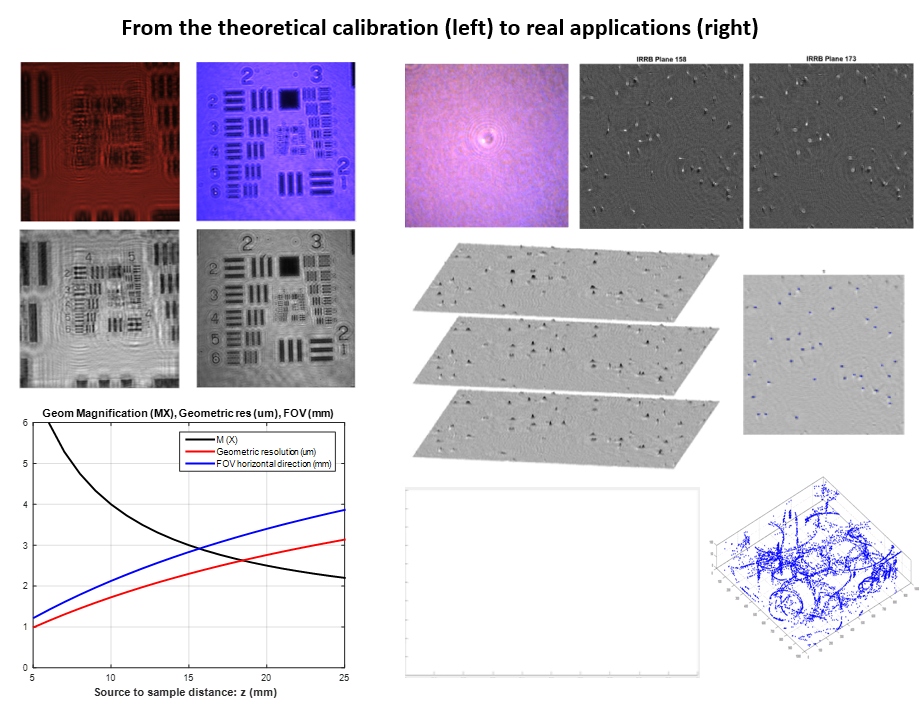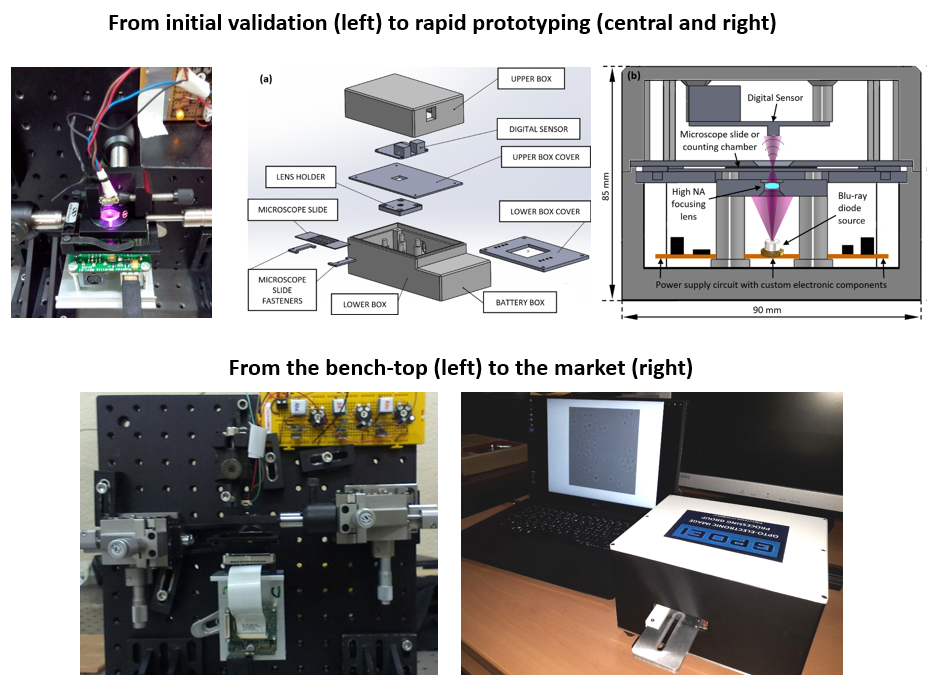Lensless Microscopy
Digital in-line holographic microscopy (DIHM) in combination with numerical imaging reconstruction proposes an extremely simplified layout while retain the advantages provided by holography with enhanced capabilities derived from digital processing algorithmic. DIHM supposes a modern realization of the original idea proposed by Dennis Gabor in 1949 where an imaging wave caused by diffraction at the sample plane interferes with a reference wave incoming from the non-diffracted light passing through the sample and the result is recorded by an electronic imaging device.
DIHM has been the cornerstone of a new kind of holographic microscopes that have some advantages (such as pricing, compactness, dimensions and handling) regarding conventional bulky holographic microscopes. Nevertheless, they still retain some disadvantages such as relatively modest numerical aperture, limited sample range applicability, noise, etc. It is the aim of our group to push on the development of new techniques capable of improving performance in lensless microscopy. Some examples have been reported by considering reflective and transmissive configurations, using single or multiple illumination wavelengths, from theoretical analysis to real applications, from preliminary validations at the lab to the prototyping and from the bench-top to the market.




















